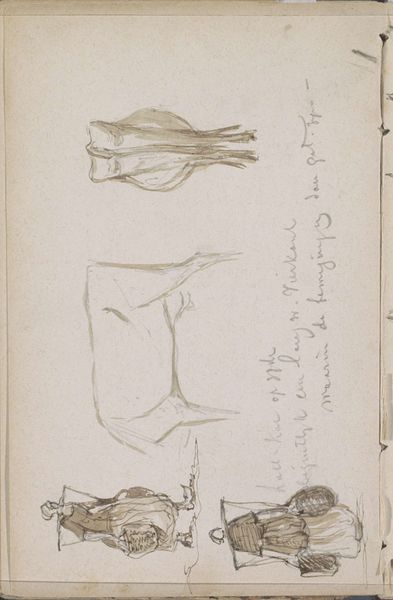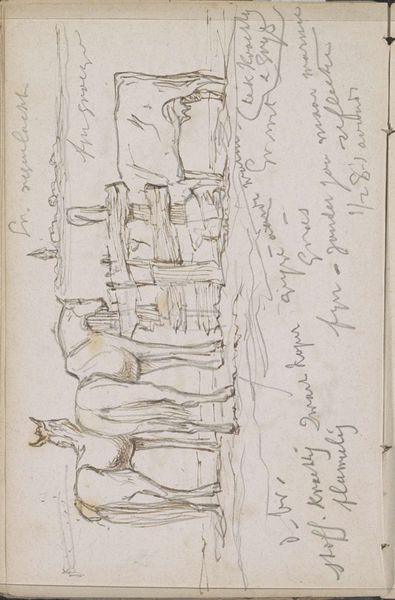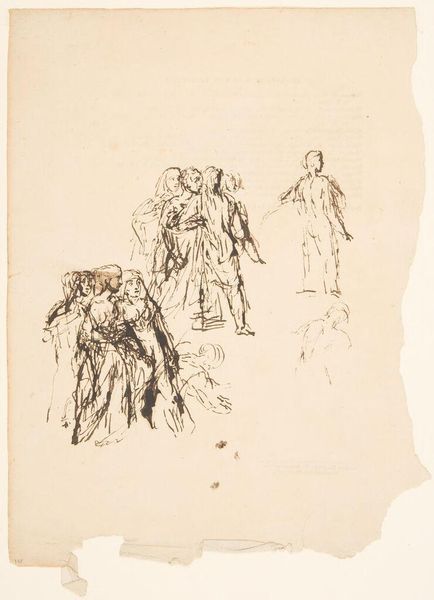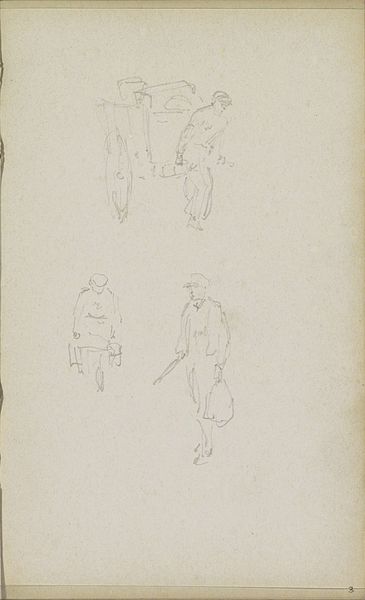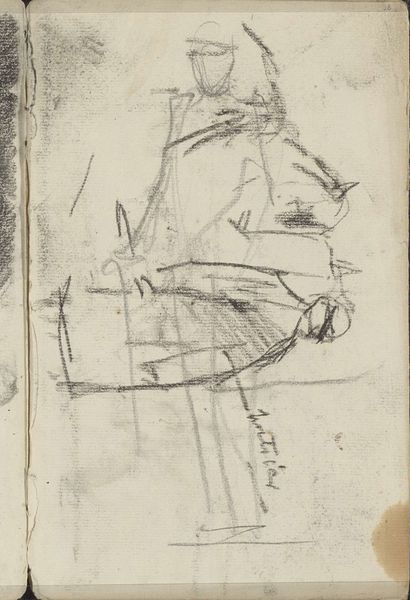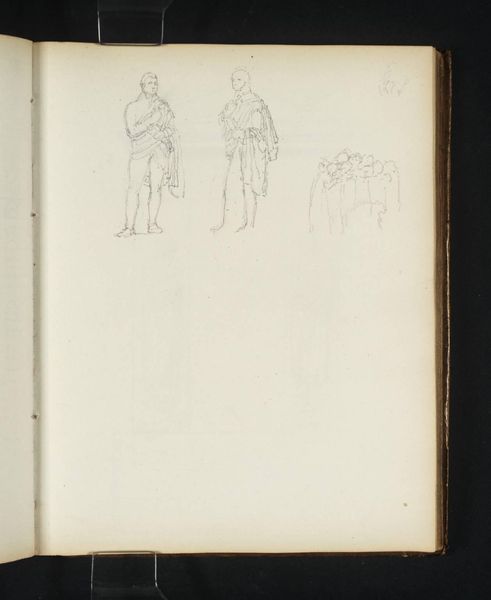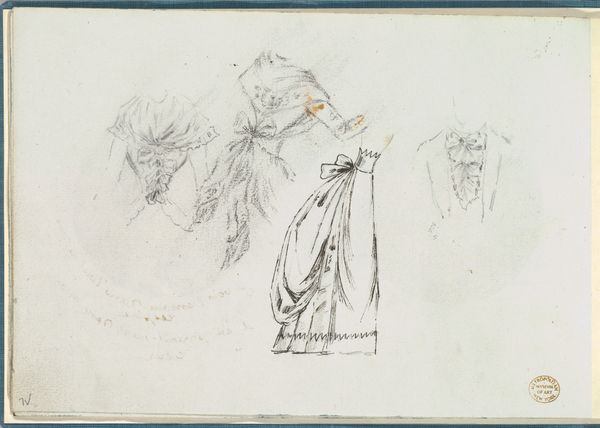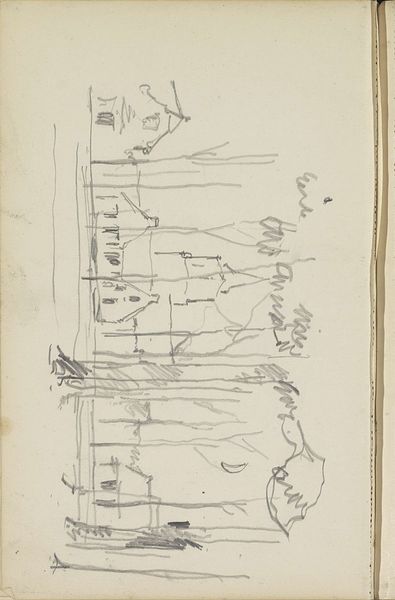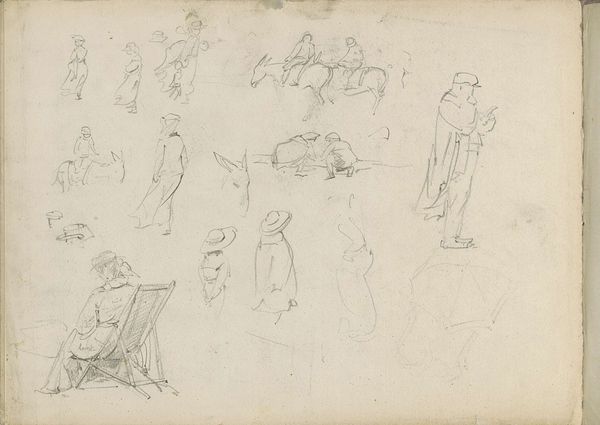
drawing, paper, pencil
#
drawing
#
landscape
#
paper
#
pencil
#
genre-painting
#
realism
Copyright: Rijks Museum: Open Domain
Curator: What a fascinating drawing! This is "Ducks, Water Carriers and a Man near a Haystack" by Johannes Tavenraat, dating from 1862. It's done with pencil on paper. What strikes you most when you look at it? Editor: It's ephemeral. Almost like a half-remembered dream of rural life. There's a hazy quality to it, accentuated by the sketchy lines. It's as if the artist captured a fleeting moment, and the details are almost secondary to the feeling of…light, perhaps. Curator: Absolutely. Tavenraat, though associated with realism, was particularly good in genre painting by illustrating ordinary people's daily life, though not a traditional one by landscape depiction. Editor: You can feel the weight these women are carrying in their postures; it grounds what could be mere strokes into representing human effort. Is that hay behind them a comment on the land bearing weight as well? It feels almost allegorical, doesn’t it? The social impact of that daily effort, what it builds and bears on their shoulders? Curator: It speaks volumes about labor and how life in the 19th century shaped one's existence. The role of women, the connection to land... These water carriers likely were vital to their communities. But there's also that tension between romanticism and stark labor. Tavenraat wasn't making overtly political statements. Editor: So, this piece isn’t agitprop, that is a subtle beauty is embedded within daily duty… So the symbolism wasn't meant to scream from the rooftops, more like it gently permeates the atmosphere of the piece, influencing how we view the subjects' posture and placing? Curator: Exactly! Editor: Well, its gentle honesty has burrowed its way into my thinking about how labor and landscape can tell an historical tale that I never even considered. I suppose the next time that I consider those landscapes with picturesque workers, my considerations will have far more historical dimensions.
Comments
No comments
Be the first to comment and join the conversation on the ultimate creative platform.
